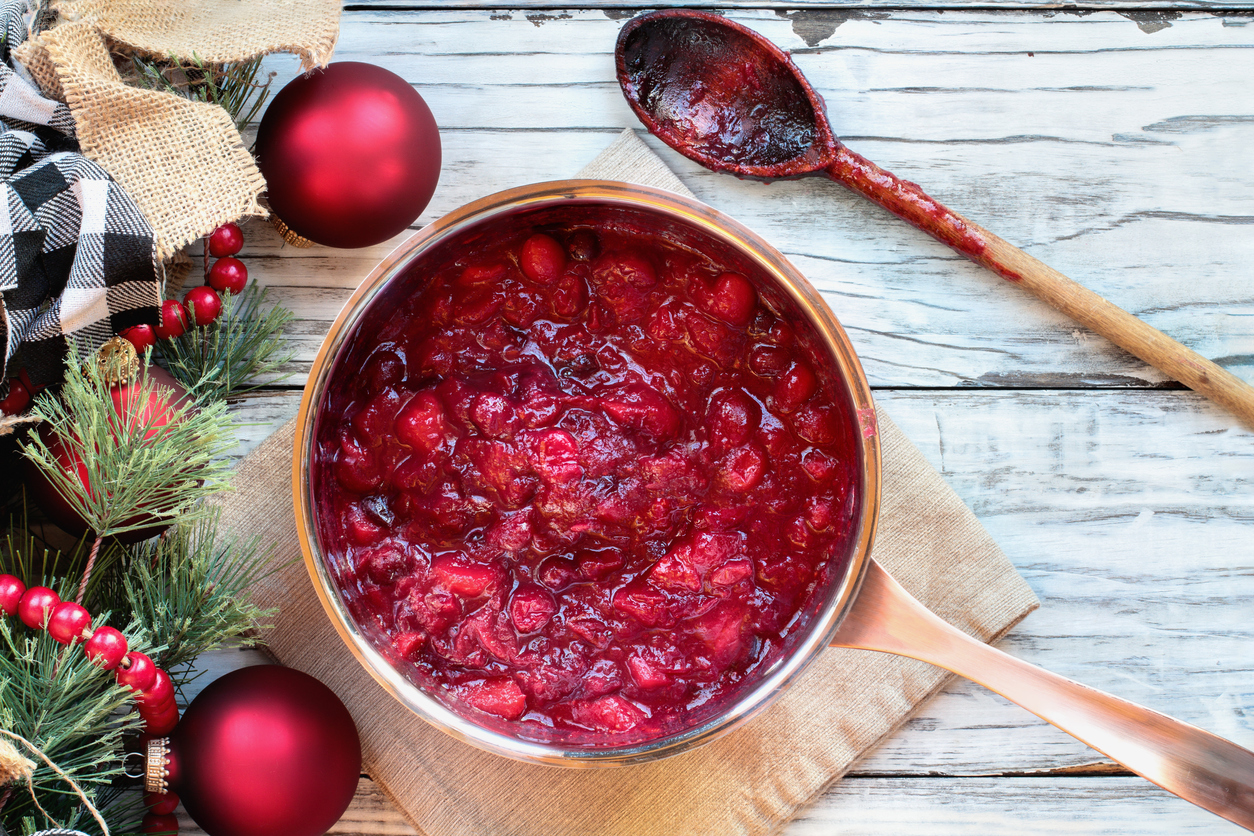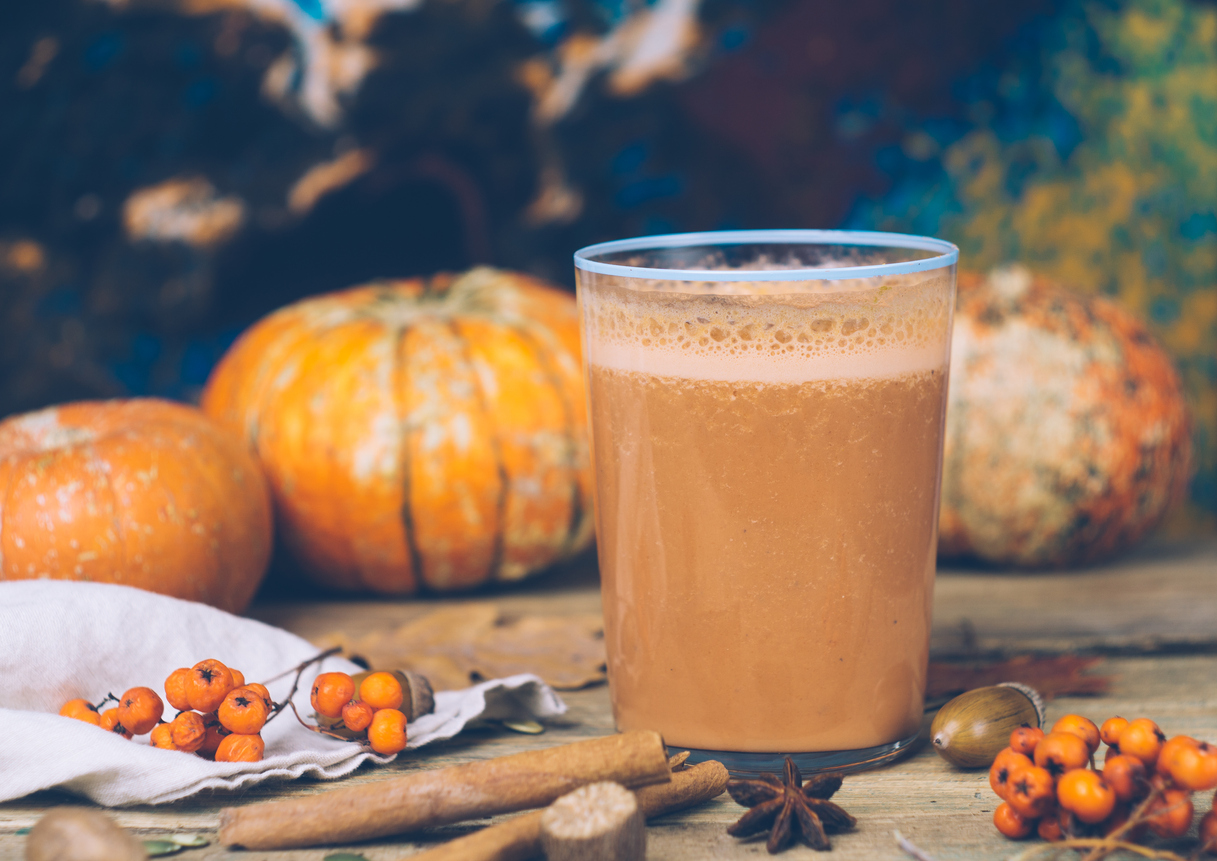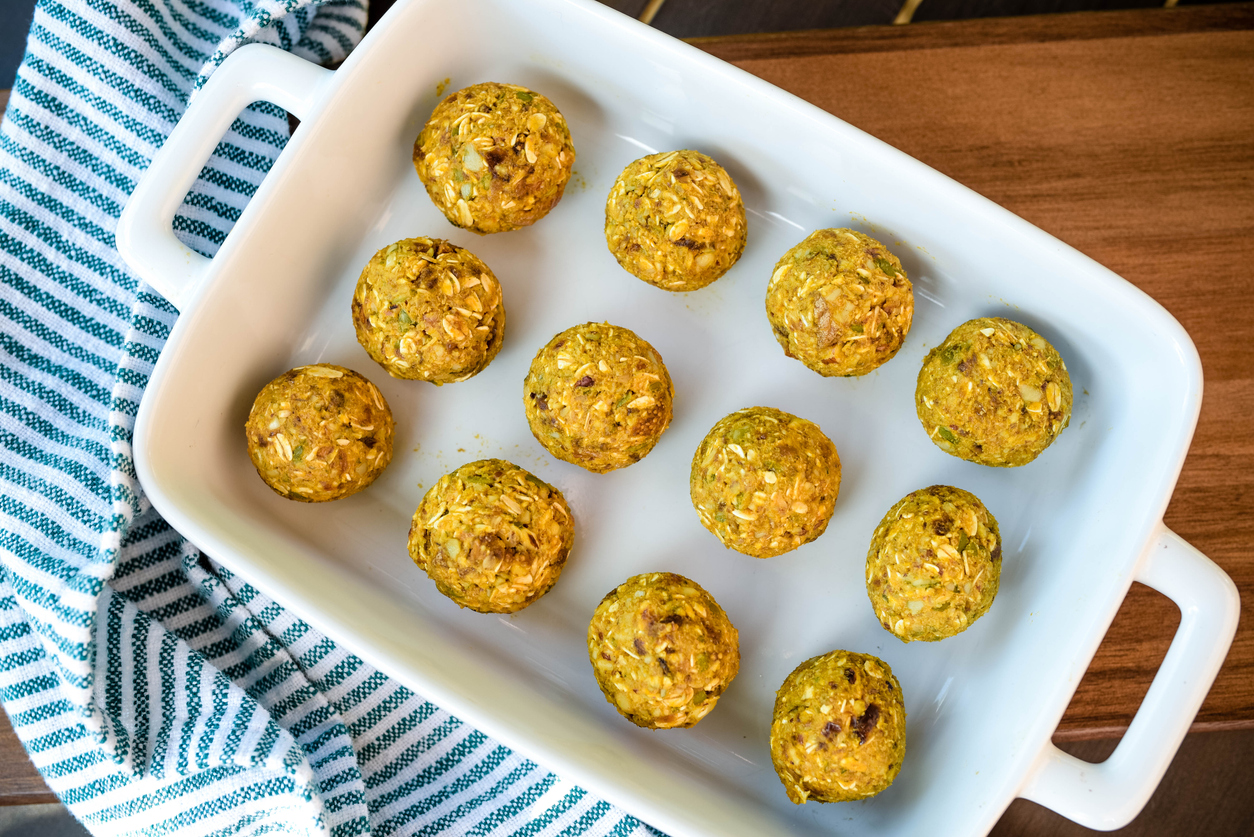Spice Up Your Winter Recipes—And Maybe Improve Brain Health
By Constance Brown-Riggs
 Could the spices in your kitchen cabinet protect or even improve brain health? The research is limited, but you can still enjoy the wonderful flavors and potential benefits that spices have to offer, with these recipes.
Could the spices in your kitchen cabinet protect or even improve brain health? The research is limited, but you can still enjoy the wonderful flavors and potential benefits that spices have to offer, with these recipes.
Do you feel more nostalgic after the winter holidays? If so, you are not alone! A survey of U.S. adults who celebrate a winter holiday found that flavors and warm spices like cinnamon and nutmeg evoke holiday nostalgia. Since ancient times, spices have been used to intensify food taste, stimulate the senses, and treat ailments.
Today, many spices used to make your family’s winter favorites are being studied for their antioxidant content. Antioxidants are substances that protect your cells from damage. Early animal research suggests that spices may boost memory and learning and prevent brain cell damage associated with Alzheimer’s disease. However, much more research is needed to determine if antioxidants or other compounds found in spices can be used to improve our brain health. In the meantime, you can still enjoy these spices' wonderful flavors and aromas—even if the holidays are over.
Allspice
Allspice, also known as Jamaican pepper, pimienta, or newspice, is the unripe berry of the Pimenta dioica plant, native to the West Indies, Southern Mexico, and Central America. Allspice contains gallic acid—an antioxidant that has been studied for its potential role in brain health. For example, a 2016 animal study of Alzheimer’s disease found that treatment with gallic acid reduced brain cell damage and improved mental function.
Although allspice tastes like a combination of cloves, cinnamon, and nutmeg, it is not a blend of spices. Try using allspice in spiced tea, cakes, spiced cookie bars, fruit pies, and French toast. Here’s a tasty Spiced Cranberry Relish with just enough allspice to enhance the flavor of your savory winter dishes.
Cardamom
Cardamom, also known as the "queen of spices," is produced from seeds found in plants grown in India, Central America, and Southeast Asia. Cardamom has shown antioxidant properties that help protect brain health. Recent research suggests that cardamom oil may be beneficial in managing Alzheimer's disease.
Cardamom has a sweet, citrus-like, floral flavor but is savory and spicy. Use cardamom in cakes, pastries, stews, soups, and specialty beverages like this Pumpkin Chai Smoothie.
Cinnamon
Cinnamon, one of the first known spices, comes from the brown bark of the cinnamon tree. There are many types of cinnamon, but Ceylon and Cassia are the most common. Ceylon cinnamon, native to Sri Lanka, is known as “true” cinnamon. Cassia cinnamon, grown in southeastern Asia, is the most common type sold in North America. Results of a 2016 study describe the ability of cinnamon to change poor-learning mice to good-learning ones by stimulating their brain’s main memory center.
Cinnamon has a sweet and warm flavor, making it great for adding sweetness to food without added sugar. Add a dash of cinnamon to oatmeal, yogurt, milk, toast, and savory dishes such as lamb, pork, and chicken. Try these Carrot Cake Bites featuring cinnamon, ginger, and nutmeg.
Cloves
Cloves come from the flower buds of an evergreen tree found in Indonesia. Cloves contain a powerful antioxidant called eugenol. Research shows that eugenol may have a role in managing functional disabilities (impairment in memory and motion) associated with traumatic brain injury.
Cloves provide a strong, spicy, sweet, almost hot flavor that numbs your mouth. Wherever you use cinnamon or ginger, you can use cloves. For example, you can use ground cloves in cakes, cookies, gingerbread, muffins, and whole grain pancakes, or in savory dishes like stews, potatoes, and sauces. Cloves are also used to stud baked hams, as a pickling spice, and to make Pomander balls (decorated oranges) that make your home smell amazing.
Ginger
Ginger is a tropical plant found in Asia, the West Indies, and other tropical regions. Studies demonstrate that ginger may significantly improve mental functions such as learning and improved memory.
Ginger’s sweet and spicy flavor makes it a great complement to carrots, sweet potatoes, and squash. You can also add ginger to fruit smoothies, cereals, and yogurt. For an Asian flair, add ground ginger to sautéed vegetables, salad dressings, and marinades. Finally, ginger gives spicy warmth to gingerbread and ginger cookies.
Nutmeg
Nutmeg is the seed found inside the fruit of the nutmeg tree. Nutmeg trees are grown in tropical regions around the world. Research suggests nutmeg may boost mood and memory and improve mental health.
Nutmeg has a sweet, warm, spicy flavor that lends itself to sweet recipes such as cookies, cakes, and fruit dishes like these Spiced Apples with Walnuts and Oats. However, nutmeg also adds depth to savory dishes.
Keep in Mind
Although animal research is accumulating, there is no clear evidence that spices will help improve human brain health. However, spices can help flavor foods while reducing added sugar, saturated fat, and sodium, and they can also add to the enjoyment of your food. Using spices in cooking is the best way to benefit from all their health potential.
Spiced Cranberry Relish
 Makes 6 servings
Makes 6 servings
Ingredients
-
12 oz cranberries, fresh or frozen, sorted and washed (or frozen)
-
2 apples, chopped
-
3 oranges
-
1/3 cup maple syrup (or sugar-free alternative)
-
1/4 tsp allspice
-
salt to taste
Instructions
Prep
-
Wash and sort cranberries.
-
Chop apples.
-
Zest one orange. Squeeze the juice from the zested orange and the second orange [will yield about 1/2 cup of juice.] If you need more fluid to reach 1/2 cup, add water.
-
Peel and segment the remaining orange and set aside.
Make
-
In a medium saucepan, add cranberries, apples, orange juice, maple syrup, and allspice.
-
Bring to a boil, then reduce heat to simmer. Simmer the mixture, stirring often and breaking up the cranberries as they soften.
-
Once the mixture has thickened, remove from heat and stir in zest and orange segments.
-
Season with salt to taste.
-
Bring to room temperature then refrigerate for at least 3 hours before serving.
Tip: Make ahead of time to allow the flavors more time to blend.
Per serving: Calories, 132; Total fat, 0.2g; Saturated fat, 0.0g; Cholesterol, 0mg; Sodium, 3mg; Carbohydrates, 33g; Fiber, 5g; Protein, 1g.
Recipe Credit: Living Plate Rx, LLC.
Pumpkin Chai Smoothie
 Makes 2 servings
Makes 2 servings
Ingredients
-
1/2 cup ice
-
1 banana, medium, chopped
-
1/2 cup pumpkin puree
-
1 Tbsp peanut butter (or other nut butter alternative)
-
1 cup non-dairy milk
-
1 tsp maple syrup (or sugar free alternative)
-
1/4 cup water (plus more if needed)
-
3/4 tsp cinnamon
-
1/8 tsp cardamom
-
1/8 tsp allspice
-
1/2 tsp vanilla extract
Instructions
-
Place all ingredients into the blender. Blend on high until creamy and smooth. Add water as needed to achieve desired consistency.
Per serving: Calories, 156; Total fat, 6.0g; Saturated fat, 1.0g; Cholesterol, 0mg; Sodium, 128mg; Carbohydrates, 25g; Fiber, 5g; Protein, 4g.
Recipe Credit: Living Plate Rx, LLC.
Carrot Cake Bites
 Makes 6 servings; Serving size, 4 bites
Makes 6 servings; Serving size, 4 bites
Ingredients
- 1/4 cup almond butter
- 1/2 cup pitted medjool dates, soaked in boiling water for 10 minutes
- 1 cup oats, quick-cook, gluten-free if necessary
- 1/4 cup carrots, finely shredded
- 1/2 tsp vanilla extract
- 1/4 tsp salt
- 1 tsp cinnamon
- 1/2 tsp ground ginger
- 1/4 tsp nutmeg
- 1/4 cup raw walnuts, finely chopped
Instructions
Prep
-
Chop the walnuts and set them aside in a shallow bowl.
Make
-
Combine all ingredients, except for the chopped walnuts, in a food processor. Blend until smooth, occasionally stopping to scrape the sides.
-
Transfer mixture from the bowl of the food processor and chill in the refrigerator for at least 10 minutes before rolling into bites.
-
Portion 1 tablespoon–sized amounts of the mixture and roll into balls. Press one side of the bite into the chopped walnuts and arrange on a sheet tray. Repeat with the remaining carrot mixture and chopped walnuts. Once the carrot mixture is all used, cover and chill the bites on a sheet tray. Keep refrigerated.
Per serving: Calories, 215; Total fat, 9.4g; Saturated fat, 0.7g; Cholesterol, 0mg; Sodium, 102mg; Carbohydrates, 32g; Fiber, 5g; Protein, 5g.
Recipe Credit: Living Plate Rx, LLC.
Spiced Apples With Walnuts and Oats
 Makes 4 Servings
Makes 4 Servings
Ingredients
- 4 gala apples, 1/4" slices and then cut in half or apple of your choice
- 1 Tbsp maple syrup
- 1/2 tsp ground cinnamon
- 1/4 tsp ground nutmeg
- 1 Tbsp coconut oil
- 1/4 cup walnuts, raw, chopped
- 1/2 lemon, juice
- 1/2 cup oats, old-fashioned
Instructions
Prep
-
Core the apples and cut into 1/4" slices. Cut the slices in half.
-
Chop the walnuts.
Make
-
Preheat a non-stick skillet over medium heat.
-
Melt the coconut oil in the pan and swirl to coat.
-
Meanwhile, in a medium-sized bowl, add the apple slices, cinnamon, and lemon juice. Toss to combine.
-
Add the apples, maple syrup, and chopped walnuts to the pan. Cook for 4-5 minutes, until the apples are slightly softened. Remove from heat and divide the rolled oats evenly among the portions. Serve immediately.
Top with vanilla Greek yogurt (or non-dairy yogurt), if desired.
Per serving: Calories, 222; Total fat, 8.9g; Saturated fat, 3.2g; Cholesterol, 0mg; Sodium, 3mg; Carbohydrates, 33g; Fiber, 5g; Protein, 4g.
Recipe Credit: Living Plate Rx, LLC.








